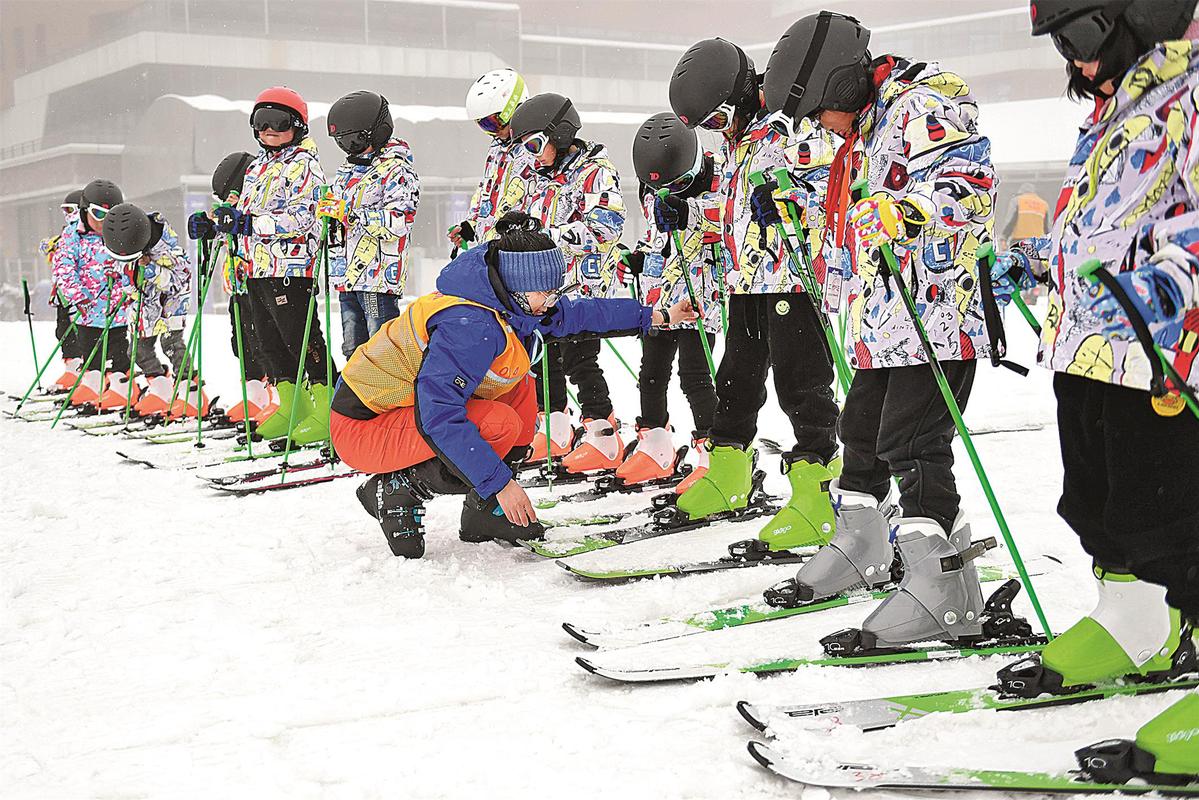Legacies testimony to Games' success
 0 Comment(s)
0 Comment(s) Print
Print E-mail China Daily, March 17, 2022
E-mail China Daily, March 17, 2022

The success of the Beijing 2022 Winter Olympics and Paralympics, and in particular the legacies of the Games, were topics of discussion at the annual sessions of the National People's Congress, China's top legislature, and the National Committee of the Chinese People's Political Consultative Conference, the country's highest political advisory body, last week.
The Beijing 2022 Winter Paralympics, which concluded on Sunday, earned high praise from para athletes and participants from across the globe, while February's Winter Olympics also wowed the world with enthralling action and ultra-smooth organization.
"After six-plus years of promotion of winter sports, we have exceeded the target of having 300 million people participate in winter sports or leisure activities. Our next goal is to consider how to improve the quality of winter sports development in China," said Yang Yang, a member of the national committee of the CPPCC and China's first Winter Olympic champion, who chaired Beijing 2022's athletes' commission.
"The legacies of Beijing 2022 will boost the sustainable development of Chinese winter sports. So the question for us is how to grab this opportunity and to have better management, operation and standards."
Yang believes the cornerstone of the sustainable development of Chinese winter sports is the participation of young people.
"We need to build comprehensive winter sports competition structures, from elementary schools to universities, as well as creating channels and platforms for youngsters to participate in winter sports," Yang added.
"We need to increase students' winter sports participation in schools. And throughout the process, we also need to facilitate the growth of all levels of winter sports associations, to nurture more coaches and refine standards."
The use of cutting-edge technologies at the venues, in pandemic prevention work and in broadcast systems, was a key factor in the success of the Beijing 2022 Winter Olympics and Paralympics. These technologies will continue to develop and become lasting legacies to benefit the host nation.
"The technologies used at Beijing 2022 had five major applications-organization, participation, broadcasting, safety and demonstration. In the last few years, we have made many breakthroughs in solving the core issues of the related technologies," said Yi Tong, an NPC deputy and researcher at the Beijing Academy of Science and Technology.
"We demonstrated how to use cutting-edge technologies, we used many green technologies and we provided strong support to ensure the high quality of Beijing 2022."
Technological highlights of Beijing 2022 included the eco-friendly ice-making system at the National Speed Skating Oval, the Winter Olympics and Paralympics torches that could protect the flame from strong wind and low temperatures, the stunning visual effects at the opening and closing ceremonies of the Games, and the 5G and 8K technologies used for broadcasting.
"All these technologies are treasures of Beijing 2022, and they can further promote the development of scientific and technological innovation," Yi said.
"After Beijing 2022, these technologies will continue to play key roles in the sustainable development of our cities."
A priority for the Beijing Winter Paralympics was creating a complete barrier-free environment. So, barrier-free facilities were provided at venues and travel hubs, and were complemented by related signage and services.
All this infrastructure will also become a legacy of the Games to benefit people with disabilities in China.
"The Winter Paralympics were a great opportunity, and the construction of the barrier-free environment in our country will certainly reach another level. Our society will be more friendly and convenient to people with disabilities," said Tian Chunyan, an NPC deputy and the deputy dean of Beijing General Municipal Engineering Design and Research Institute.
"But we still need to realize there is a lot more work to do to refine the barrier-free environment in our society. We need to listen to the voices and suggestions of people with disabilities when we design all these facilities.
"We also need to increase awareness so more people accept, care for and cherish people with disabilities. Such education should begin in kindergartens and elementary schools. We also need to create more education and job opportunities for them.
"We must try our best to help people with disabilities so they can enjoy a wider space in our society."





